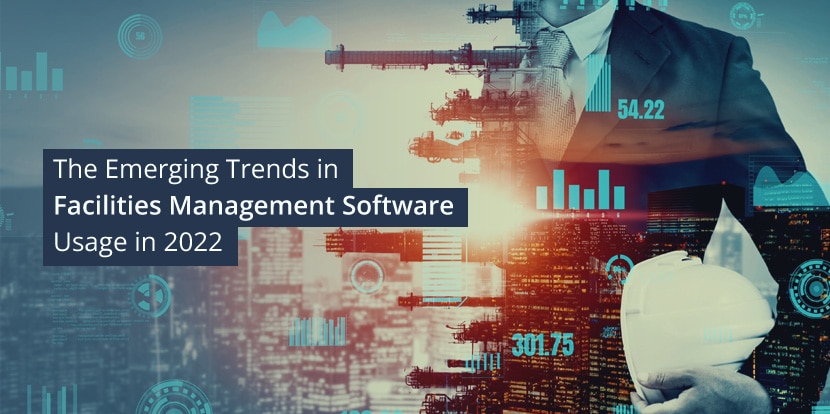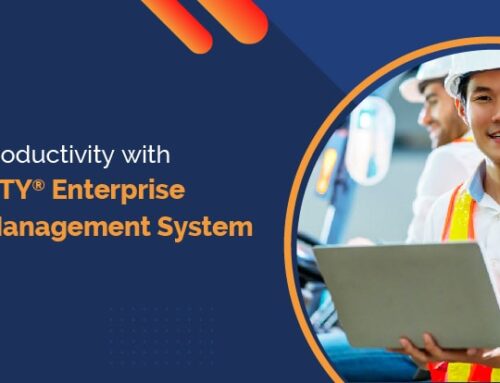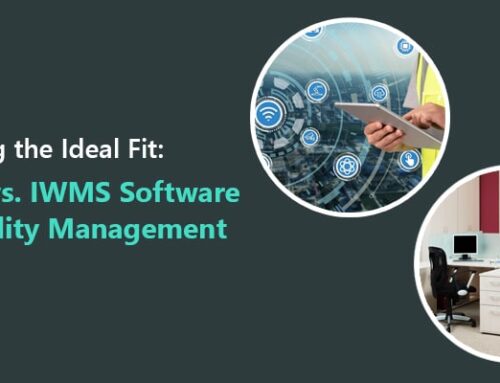You can probably compare the current COVID situation with the Industrial Revolution or the advent of the Internet. With almost 90% of the workforce working remote, the emphasis today is on flexibility, employee experience, and perhaps most importantly, the physical and mental health of the entire organisation.
The emerging trends in facilities management and the new features of facilities management and workplace solutions offered by enterprise software companies reflect the fast-changing priorities that have ushered in the necessity to rethink our policies and technology to support them.
Here are the top 10 emerging trends to be aware of for 2022:
The Emerging Trends in Facilities Management Software Usage
1) Workforce Distributed Far and Wide
Teams of people no longer meet in the same room regularly as they used to a couple of years ago. In-person meetings are no longer in practice with the workforce being scattered across vast distances and different time zones. According to a recent CBRE Occupier Sentiment Survey, over 87% of large enterprises (employing 10,000+ employees) opt for a hybrid work strategy, with most of their employees working from home a great deal. This throws a challenge to facility managers who need to replan their office space; the focus is on space management using a strategic and customized hotdesking solution to manage office space efficiently.
2) The Increasing Need for Flexible Workspaces
As early as January 2021, a PwCsurvey indicated that 31% of the enterprises were keen on reducing their office space, although 56% wanted to increase it. Does this mean they are expanding the office space in their corporate headquarters? Certainly not. According to the same survey, 58% of the respondents were OK with opening additional locations, including satellite offices away from the humdrum of the city. A new, innovative work model to help balance employee workplace needs is emerging. Known as the Hub-Home-Spoke model, which focuses on creating a framework for occupancy and space, and is based on pandemic-related research. A webinar conducted recently delved into the best ways to plan flexible office space using advanced workspace management software to manage workspaces efficiently post-COVID-19. The webinar also delved into crucial issues like health, safety & well-being, remote work, or work from home, and Environment, Social, and Governance (ESG).
3) Office Hotdesking or Hoteling is the in thing
According to a global survey conducted by CBRE research as early as September 2020, over 57% of the workplaces had already assigned seating even before the pandemic began, and 10% have plans to adopt assigned seating in the future. However, the trend today is hotdesking or hoteling, using a hot desk booking app or desk booking software, since it offers employees the liberty to claim the best available seat at any given time. They can be sure of getting a particular seat, thanks to the office workplace reservation system prevalent in many offices today, especially those that use such advanced space allocation software. Employees can also use such seat reservation software, offered as part of eFACiLiTY®, the leading IWMS solution. It has a Space Management Module with the hotdesking concept well implemented to reserve seats on a need basis that could be a couple of times a week, several times a month, or a quarter.
4) Employees can look forward to a Personalised Experience
Today, employees worldwide are too used to the flexibility remote working offers, especially while enjoying the comfort of their home or favorite spot to work from (restaurant or park), where uninterrupted power and connectivity are available around the clock. Each person has her/his plan worked out for a typical workday that suits them best. If, and when they get back to their offices, they would prefer the personal work style environment to continue. They may not be very keen on changing their habits to suit the workplace environment. To keep up with such new facilities management trends, business leaders need to embrace a mindset incorporating hospitality to think of the best ways to use modern technology, amenities, and services to get the best out of each employee of the company.
5) The Focus Today is on Employee Health and Wellness
Health and wellness are no longer just a “good to have” perk; they have turned into an essential benefit to all employees, given the persisting COVID situation. The deadly virus has taught us a lesson – we need to curb the spread of viruses by maintaining social distancing norms and having regular wellness screenings, with a high emphasis on cleaning and sanitation at the offices where thousands of people work.
Today, the focus needs to be on employee mental health to prevent a mental health crisis that’s brewing in most offices as employees start returning to work. Companies need to understand the various health stages during major disaster recovery. Most of the directly affected people are contending with the five stages of grief defined in what’s known as the Kubler-Ross Grief cycle – denial, anger, bargaining, depression, and acceptance.
Employers need to be understanding and help employees return to the workplace with renewed confidence by providing a healthy and safe workplace environment. Did you know that according to a CBRE report, there is a loss of 10.4 million working days every year due to stress alone? The report further states that employee wellness programs can increase productivity anywhere from 10% to 45% (10% is on average).
6) It is Smart to Invest in Smart Building Technology
Connecting the Internet of Things (IoT) to devices is increasing steadily, and according to IDC’s predictions, the number of IoT-connected devices could exceed 41.6 billion by 2025. In the workplaces today, the trend is to adopt smart building technology that helps employees check into their workstations with the desk automatically adjusting to their heights. Further, they can adjust the lighting according to their preferences, set air conditioners at optimum temperatures, adjust the window blinds based on the sun’s movements, reserve meeting rooms, and the equipment they need for the day, check the indoor and outdoor air quality levels and get alerts when the air quality turns unhealthy – and the best part is they can accomplish it all by merely pushing a button on their mobile phones. Today, facilities managers can create a comfortable, energy-efficient environment, manage their assets, and building systems, and plan all future needs, thanks to smart building technology.
7) Building Information Modeling is becoming Essential
Building Information Modeling, popularly known as BIM software or asset and maintenance management software, is meant to map the physical features of a building all through its life cycle, right from the drawing board stage, construction, to regular maintenance. Such thorough mapping by integrating with efficient building maintenance software programs enables architects and facilities managers to plan smart buildings right from the inception, which allows them to take a proactive approach to breakdowns and repairs.
Did you know that the Scandinavian region, including Norway, Finland, Denmark, and Sweden, were some of the first countries to adopt BIM hands-on? It is mandatory in the UK and other European countries for public sector projects. In the UAE BIM is mandatory for projects that are 40-stories or higher. Though not mandatory in China, it is being adopted in most projects. According to the International Journal of Engineering Research & Technology (IJERT), the BIM adoption rate in India is pretty low, hovering between 10% and 18%.
8) Applying Data Analytics for Driving Decisions
Today, smart building technology leads the latest trends in facilities management, and data analytics plays a significant role in crucial decision-making.
With precise information about mean occupancy levels, peak occupancy levels, the spaces used by employees, etc., at their fingertips, facilities managers can make strategic decisions within split seconds. Such accurate data analytics helps business leaders decide how much space is available and the best ways (like leasing, sub-letting, etc.) to use it to generate more revenues. Facilities managers can also rework their floor plans to suit the arising scenarios. According to a CBRE report on top facilities management trends, data analytics will become crucial by 2025 to address costs and performance.
9) Enhancing Productivity and Collaboration through Emerging Technologies
The gap between the virtual and physical workplace is narrowing, thanks to emerging technologies using Artificial Intelligence (AI), virtual reality, and augmented reality. With the ratio of humans to machines being 70:30 today, it will become 50:50 in the next 25 years according to the recent webinar on the future of work by Peter Muscovich of JLL strategy + Innovation. Employees will start working more closely with their machine counterparts and can rely on them to make quick and accurate decisions. We are entering the era of robotic process automation (RPA), where software is capable of learning and deciding how a task needs to be accomplished and executes it with far greater efficiency than mortals. Operating at the user interface level, RPA can be customized to suit individual needs and integrated to work in tandem with multiple solutions. Most companies have integrated RPA into their tech support and customer support teams for handling mundane issues like password resets, allowing the IT teams to focus on core competencies. Some HR teams in organizations are applying RPA to their onboarding process to streamline the workplace experience right from the start.
10) Consolidating Workplace Technology
With mergers and acquisitions (M & A) happening day in and day out, companies need to simplify their software and technology. Consolidating the workplace technology will help streamline processes, thus reducing the size of technology stacks at the workplace. It makes sense to have integrated workplace management systems connecting to different technologies and data sources to create a seamless employee experience. With the challenges presented by the pandemic outbreak, offering a flexible, dynamic workplace is the need of the hour to attract the best talent in the industry and maintain a competitive edge. In order to achieve this, it is crucial to have the right data, technology, and processes in place. Gartner predicted as early as 2016 that in the coming years, the best competitive advantage organizations get will depend on their employees’ ability to exploit emerging technologies.
Conclusion
The future is bound to witness an acceleration in the emerging facilities management trends, and they have been building up over the past couple of years. All aspects of facilities management now have a greater focus on the people working in the industry, and the people impacted by it. What is evident from the emerging facilities management trends is the fact that the workforce needs a complete makeover, with facilities managers taking on more strategic roles, with software suites like eFACiLiTY®, a comprehensive solution with 35+ stellar modules adding greater value to the workplace. The need is obviously to strike a fine balance between conflicting priorities of controlling costs while not compromising the employee experience.













